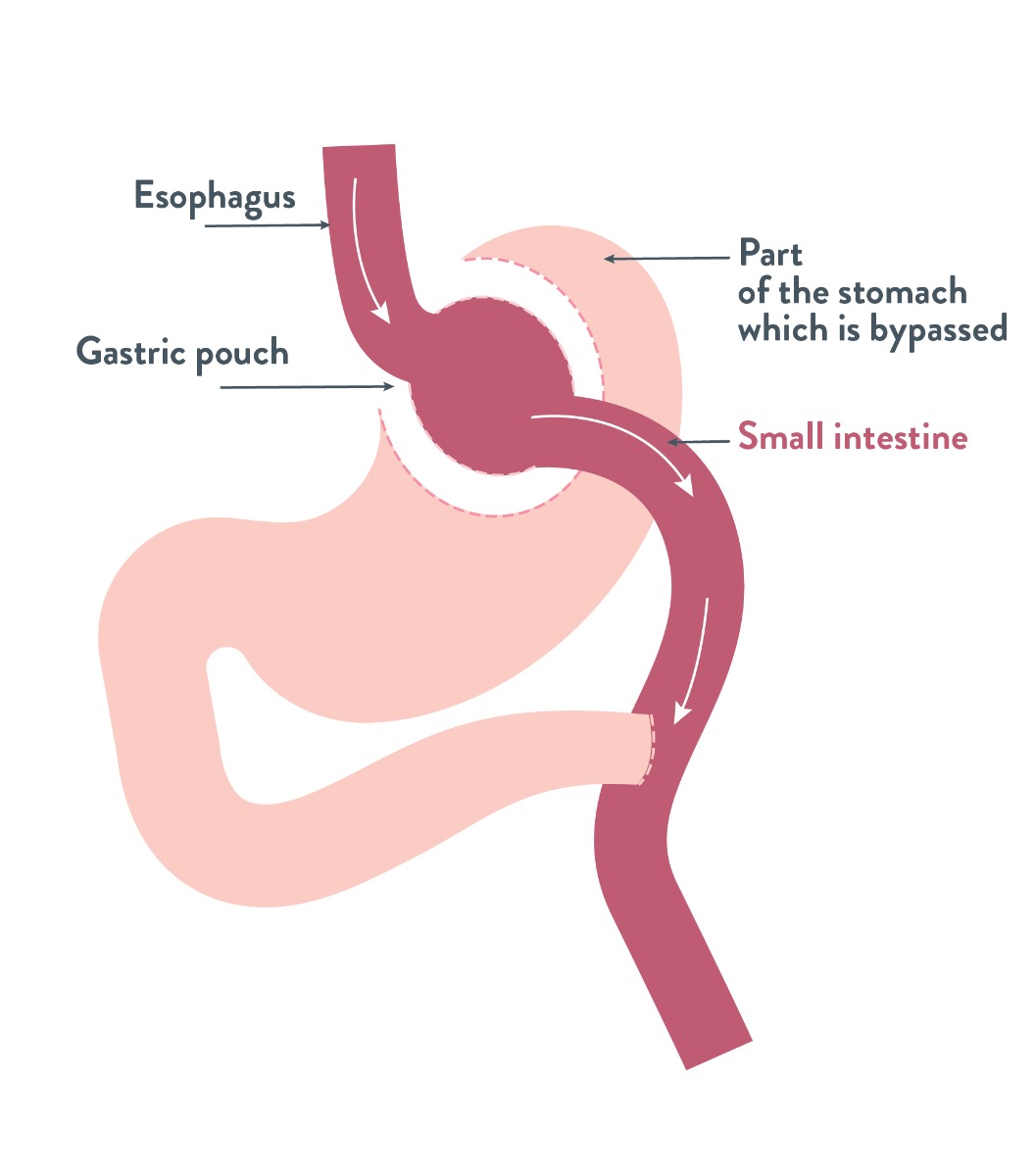Gastric bypass
In this technique, the largest part of the stomach, the duodenum and part of the small intestine is excluded from digestion. The stomach is stapled across the top to create a new small pouch for a stomach. This pouch is no longer connected to the rest of the stomach and can only hold 20-30 ml. This is where the food arrives. You are able to eat less and you feel full more quickly. The rest of the stomach is no longer used, but is not removed. It still produces gastric juice and other digestive juices. The small intestine is cut through: the upper part of the small intestine remains connected to the ‘old’ stomach, while the lower part of the intestine is connected to the small pouch. This way, the food in the pouch arrives directly in the small intestine. The ‘old’ stomach and the duodenum are bypassed this way. Finally, the end of the duodenum is reconnected to the small intestine, approximately 100-150 cm further than the connection of the new stomach with the small intestine, where digestive juices of the pancreas and bile salts are mixed with food.








